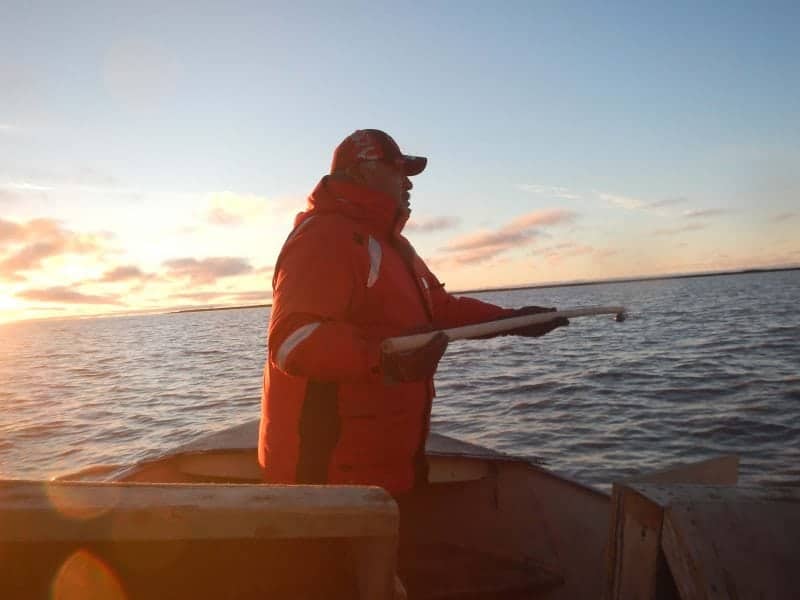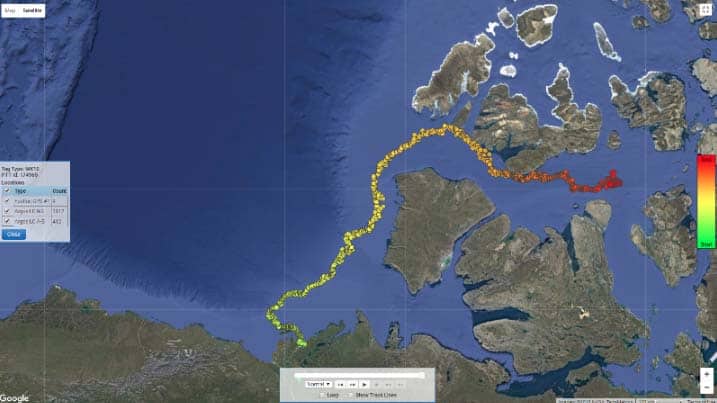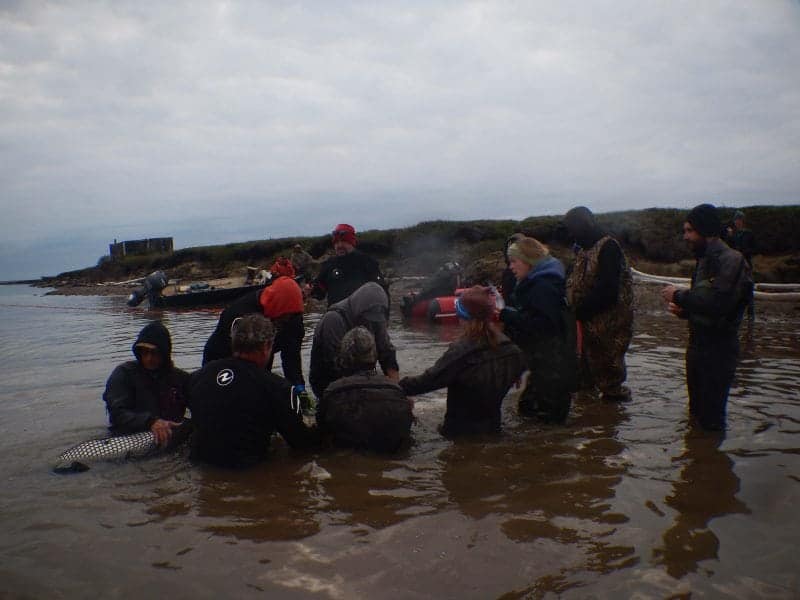Fourteen beluga whales were tagged in the first beluga tagging program in the eastern Beaufort Sea since 2005 wrapped up July 13.
Shannon MacPhee, aquatic biologist with Fisheries and Oceans Canada, said the tagging program was a success, and was a joint effort between Fisheries and Oceans Canada, the Fisheries Joint Management Committee and the game council.

Photo courtesy of the Department of Fisheries and Oceans
"Five boats, a crew of 20, including four scientists and people from Aklavik, Tuktoyaktuk, Inuvik, Sachs Harbor and Ulukhaktok were involved in the tagging program," said MacPhee. "We camped on Henrickson Island, which is where people from Tuk traditionally land to harvest whales. It takes so many people to tag a beluga whale!"
MacPhee said the tagging program has been in the works since February 2016.
"I think what's really interesting about this project is that it's really community driven. The research questions came out of a big community engagement event that we had called Beluga Summit in February 2016," she said. "At that time people were asking for more information about where and when belugas are moving and why they're travelling to certain places … community members were observing whales at different places than they had in the past."

Photo courtesy of the Department of Fisheries and Oceans
With the new tags, researchers are able to track the movement and diving behaviours of the tagged whales using satellite and GPS information on Google Earth.
She said the data will also be used to support the design of an aerial survey of the eastern Beaufort Sea beluga population, where their population will be estimated.

Photo courtesy of Shannon MacPhee/Department of Fisheries and Oceans
"It's really important data that we're collecting because it will help us do some habitat mapping and then linking the distribution of whales to the distribution of their prey," said MacPhee. "It's like the whales are acting as oceanographers, mapping their own habitat."
Three types of tags were used in the program.
The first, traditional backpack-style tags collect detailed location information and dive profiles of the whales.
The second tags are a new backpack-style tag called an oceanographic tag, which collects information about the temperature and salinity in the whale's habitat.
The final tags, miniature pop-up archival transmitting tags, are new and a less invasive tag that provide similar data to the first two types of tags.
Most of the tags will last until November, but some tags will last throughout the winter. They will continue to be monitored until their batteries run out.
One new aspect of the tagging program is its Facebook page, which MacPhee said was started because of requests from communities during the consultation process in 2016.
"Originally, it was background information about the program and the Eastern Beaufort Sea beluga population," she said. "When we got into the field it got really fun because we were posting live updates of the number of whales we had tags and pictures of people tagging the whales. What I learned from this experience is that Facebook is actually a really powerful tool in the North."